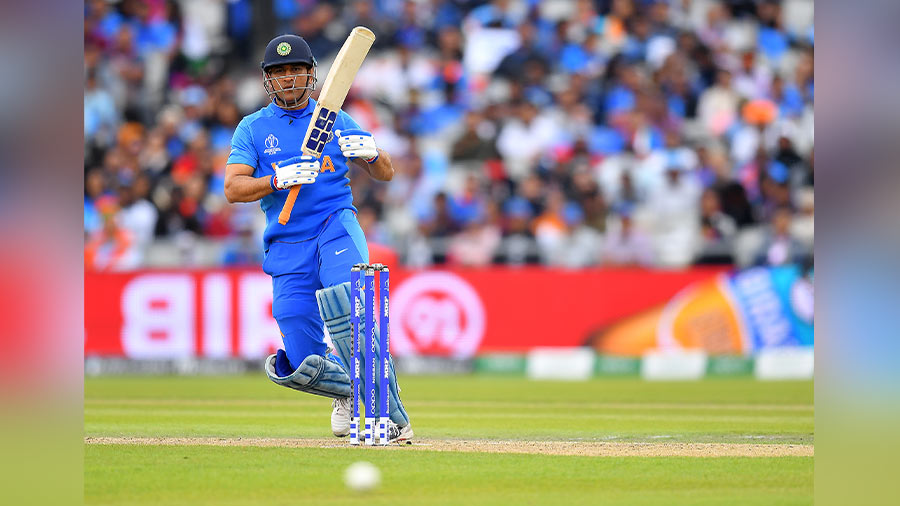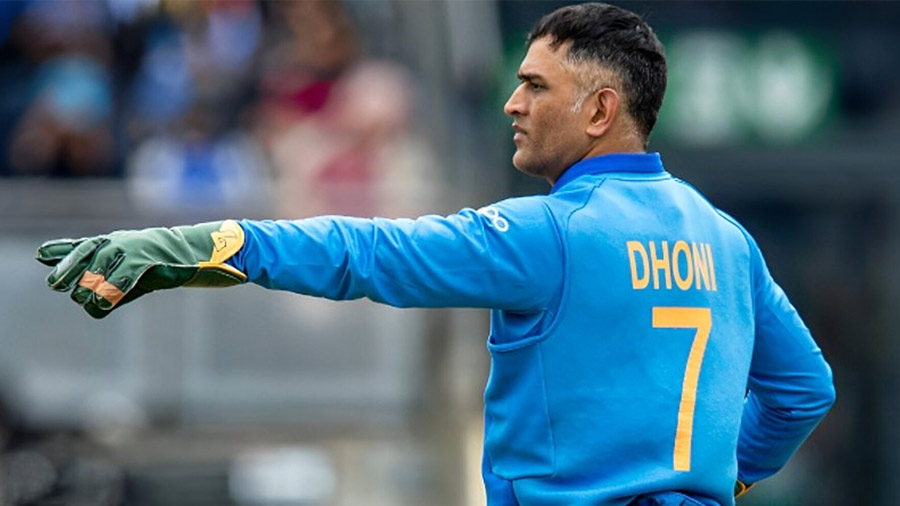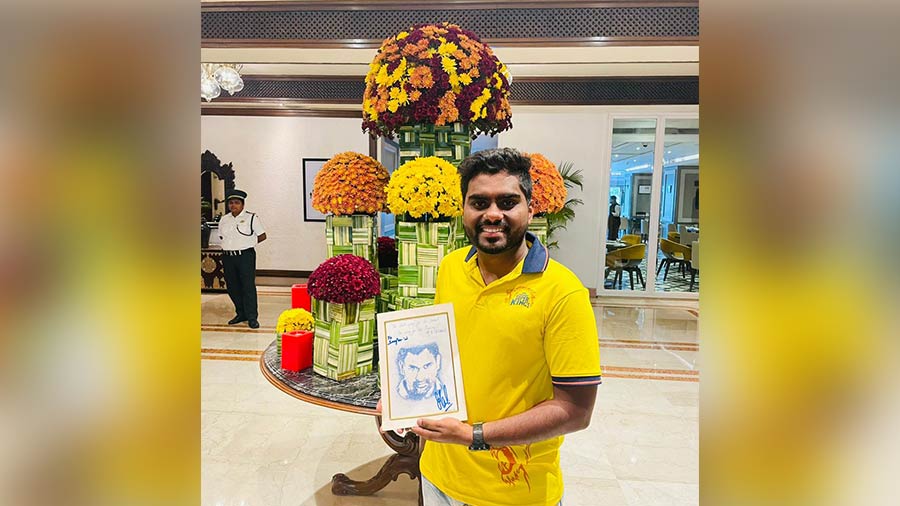Cricket had not introduced jersey numbers when Kapil Dev was playing for India. But imagine for a moment if it had. What number would India’s first World Cup-winning captain have chosen? What if he had picked the number seven? What if the greatest moments in Kapil Dev’s career, from holding aloft the World Cup at Lord’s in 1983 to clinching the Benson & Hedges World Championship in Melbourne two years later, had come with him sporting seven on his back? And what if, once Kapil Dev had retired in 1994, the BCCI had opted to retire the number seven with him? What would that have meant for the decades-long love affair between number seven and another Indian World Cup-winning captain? In short, it would have been impossible, for Mahendra Singh Dhoni would have had to settle for another number.
As reports emerged last week of Dhoni’s iconic number seven shirt being retired by the BCCI (which effectively means that no other men’s cricketer can wear seven anymore for India), social media overflowed with tributes for how Dhoni had made the number his own. Be it winning the ICC World T20 as a first-time captain in 2007 to ending India’s 28-year-long wait to lift the ICC Men’s World Cup in 2011 to triumphing in the ICC Champions Trophy in 2013, Dhoni’s most defining moments in the blue of India were inextricably linked with the number seven (which Dhoni had supposedly preferred for being born on the seventh day of the seventh month of the year). Unlike most of Indian cricket’s biggest names this century, Dhoni had always worn the same number in limited overs cricket (jersey numbers in Tests began well after Dhoni had retired from the format), resulting in a natural association between him and seven, which has long had a special resonance in the world of sports. Unfortunately, it is a resonance that can no longer be redefined in Indian cricket, for the story of number seven in India’s biggest sport has ended with M.S. Dhoni. Great as Dhoni is, such an honour is unnecessary as well as undesirable.
A brief history of jersey numbers in cricket and the practice of retiring them

Dhoni and Sachin Tendulkar are the only Indian cricketers to have their respective jersey numbers retired
Jersey or shirt or kit numbers took a long time to enter cricket. Even though the World Series Cup in Australia in 1995-96 formally kick-started players displaying numbers on their backs, it was not until the World Cup in 1999 that the practice became universal. Retiring jersey numbers in cricket was not in fashion until Cricket Australia became the first to do so by retiring Phlillip Hughes’s number 64 following his untimely passing in 2014. Three years later, the BCCI retired the number 10 as a mark of reverence for Sachin Tendulkar (Shardul Thakur had worn 10 briefly for India before being deprived forever!). In 2021, the Cricket Association of Nepal retired the number 77, belonging to Paras Khadka, captain of Nepal between 2008 and 2019. And now, in December 2023, the BCCI has made Dhoni’s shirt number the fourth in cricket history to be out of bounds.
The tradition of retiring jersey numbers in memory of great players goes back to ice hockey, which inaugurated the practice in professional sport in 1934 by retiring the number six shirt of Irvine ‘Ace’ Bailey, an ace performer for the Toronto Maple Leafs. Over time, jersey numbers have not only become an ubiquitous symbol for athletes on the field but also evolved into brands for select stars off it. From Cristiano Ronaldo’s co-opting of the number seven to Virat Kohli’s strategic insertion of the number 18 in his commercial ventures, a number on the back has never meant more for the face in front. Which is precisely why retiring jersey numbers should stop being an exercise in admiration.
Numbers as heirlooms to be passed from one great to another

Cristiano Ronaldo made the number seven a part of his identity as well as his brand after taking over the shirt at Manchester United
The case against retiring jersey numbers is not directed at Dhoni in particular. Rather, retiring jersey numbers is problematic as a principle for two reasons. First, it definitively debars the next generation(s) from adding to the legacy of a number. Take football and Manchester United, for instance, where the number seven is seen as an heirloom passed from one great to another. While it was George Best who catapulted the number to adulation, the likes of Bryan Robson, Eric Cantona, David Beckham and Cristiano Ronaldo amplified what it meant to strut out on Old Trafford as United’s number seven. It is true that United retaining the number led to many buckling under the weight of the shirt — Michael Owen to Antonio Valencia to Angel di Maria and Alexis Sanchez — but it also underlined the greatness of those who were able to take over a legendary number and make it their own. Since Ronaldo left Manchester in 2022, the number seven has gone to Mason Mount, who has a chance to become a cult figure himself for the Red Devils.
No such thing, however, is going to happen to the number seven shirt in Indian cricket. In case you are wondering who could possibly choose to wear seven among the current crop, the answer is Shubman Gill (who wears seven in the IPL) but has taken to wearing 77 for India because he was reportedly told that seven was not up for grabs even before it was formally retired. Imagine how Gill could have taken the history of the number forward, and even if he had not, someone else would have come along to continue from where Dhoni left off. In fact, since that someone else will now have to select some other number, the last memory of the number seven in Indian cricket will always be Dhoni’s agonising run out in the semi-final of the 2019 World Cup against New Zealand.
To retire shirt numbers is to implicitly admit that someone cannot be emulated or eclipsed

There is much more to MSD than the number seven
The second reason why no number should ever be retired in sport is because it accords too much respect to one individual, to the point of portraying them as untouchable. It is foolish to legitimately question the contributions of Dhoni (or Tendulkar) to Indian cricket, even Indian society as a whole. But to retire their shirt numbers is to implicitly admit that they cannot be emulated or eclipsed. While individual greatness is always tricky to compare across generations, it is fair to say that not even Dhoni or Tendulkar’s achievements are beyond reach. After all, it was only a month ago that Virat Kohli broke Tendulkar’s record for the most ODI centuries in men’s cricket, something very few could have guessed when Tendulkar played his last ODI in 2012.
Looking back, it makes for interesting trivia to discover that the number seven was worn by Ajit Agarkar in the 1999 World Cup and by Javagal Srinath during the 2003 edition. Dhoni, of course, wore it at four consecutive World Cups between 2007 and 2019. But come the remarkable tournament of 2023 earlier this year, the number seven was not seen at the World Cup for India. And nor will it be seen in subsequent World Cups. Renowned for being self-effacing, one wonders what Dhoni makes of the tribute himself. Were it left to him, Captain Cool may not have wanted to be remembered by claiming monopoly over a number. After all, there is far more to Dhoni than the number seven, just as there should have been far more to the number seven than Dhoni.


